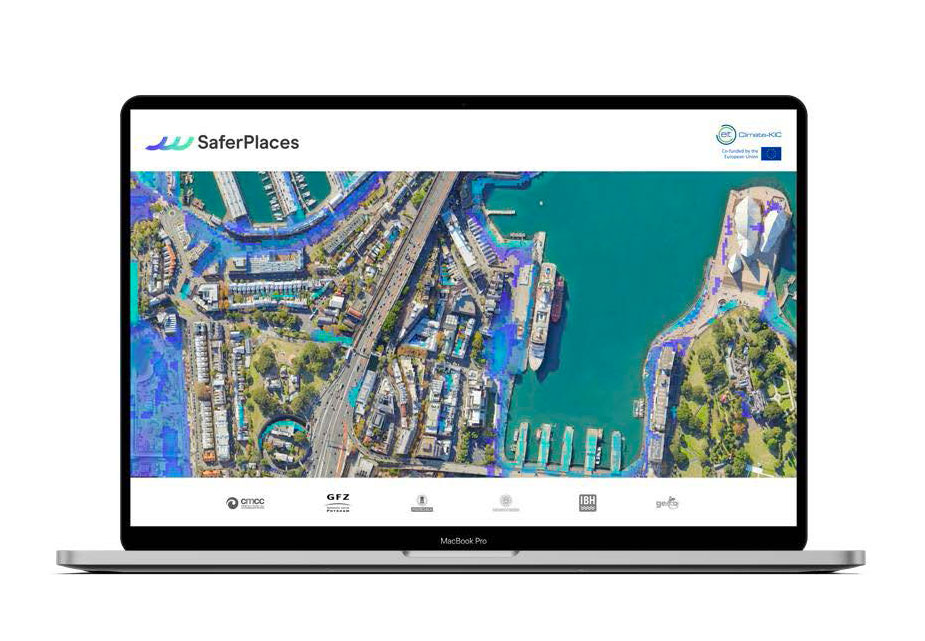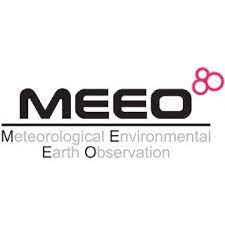
 Data Processing & Visualisation
Data Processing & Visualisation  Data Analytics, Insights & Applications
Data Analytics, Insights & Applications The proposed solution consists in a cloud-based platform to assess and forecast pluvial, fluvial and coastal hazard and support communities with high resolution, timely and accurate flood risk intelligence. The cloud platform provides a digital copy, so called ‘twin’ of the urban catchment, where users can quickly and cost-effectively generate flood hazards and risk maps, allowing the test of the effectiveness of multiple flood mitigation measures, and supporting early warning and flood emergency.
With the integration of Earth Observation satellite data, the SaferPlaces platform can automatically generate more accurate inputs to the existing algorithms, in terms of flooded areas, rainfall data and DEM generation. By performing calculations in almost real-time, with the ability to include climate risks and adaptation plans, SaferPlaces supports multiple stakeholders in improving preparedness and climate resilience.
Multiple stakeholders, public and private, are involved when flood events happen. They can benefit from punctual, location-explicit and timely information provided by the SaferPlaces platform to understand, respond and plan appropriately against flooding. Specifically, SaferPlaces can help:
Europe, US, Worldwide


The SaferPlaces platform already delivers on-demand timely risk assessment data for pluvial, fluvial and coastal flood hazards, by creating a digital twin of any urban flood watershed environment.
The innovation consists in integrating within a cloud computing framework the availability of big open data (climate, satellite, economic exposure and elevation model) repository (Copernicus (Sentinel), Capella Space, ICEYE, COSMO, UP42 Airbus, Google Earth Engine and Amazon) and innovative AI-based flood hazard and damage models with proprietary IPR. The users can generate the required flood risk intelligence with global coverage through a few easy steps and with competitive economic costs.
Within the framework of ESA Incubed, we are developing new functionalities able to integrate satellite data and automatically generate three fundamental spatial layers:
These layers are merged within the elastic and scalable cloud framework of the SaferPlaces platform, with the aim to ensure global high-resolution coverage and provide more accurate input data to the existing model component algorithms. In addition, they enrich the platform with the possibility to map in quasi-real time flood hazards, for supporting flood emergency and disaster management.
SaferPLACES differs from other products already existing because it offers not only static maps, but a cloud web platform performing calculations in almost real-time, with the ability to include climate risks and adaptation plans. In addition, it exploits high resolution data, it fills data gaps when present, and it addresses multiple climate and mitigation scenarios.
One of SaferPLACES unique characteristics is Accessibility: high-resolution flood risk maps with no need of complex and resource-intensive models. Nevertheless, compared to existing solutions SaferPLACES has other unique advantages: first of all, it allows global coverage, solving the needs of those investing and operating in remote locations; secondly, SaferPlaces is cost effective, requiring no computing power or significant pre-existing expertise; last but not least, SaferPlaces provides climate and resilience-related insights: it offers the customers the chance to see whether flood risk mitigation options work under dynamic urban and climate conditions.
SaferPlaces ESA in-cubed activities and project implementation started the 1th of September and will last for 18 month. Nowadays we have defined the implementation plan and drafted the technological framework for the new EO-based functionalities.
The SaferPlaces Platform is anyway available and can be activated for every city worldwide, a demo is available after registration at our web site www.saferplaces.co

